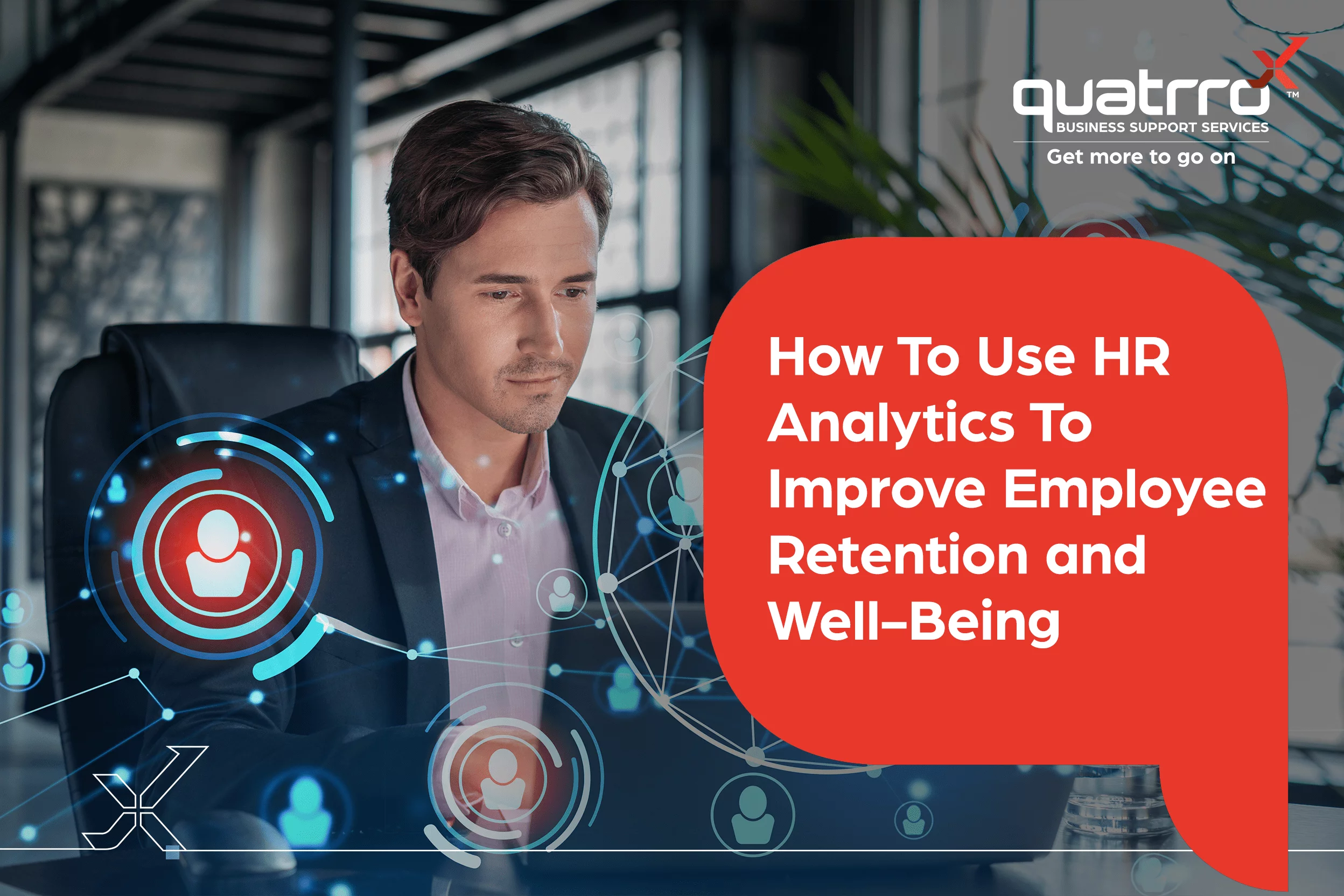Blog Details
How To Use HR Analytics To Improve Employee Retention and Well-Being
August 31, 2023

Retaining top talent and ensuring that employee well-being is always at the forefront can be a complex challenge for businesses large and small. Human resources analytics is a powerful tool that top companies have begun to use to help address these critical issues. By leveraging data- driven insights, companies can develop comprehensive strategies to enhance employee retention, well-being and productivity. Here’s what you need to know about the capabilities and real-world applications of HR analytics.
What is HR Analytics?
HR analytics is the systematic collection, analysis, and interpretation of HR data to help make informed decisions related to human capital management. It leverages statistical and computational techniques to find patterns and show opportunities where companies can intervene or improve to retain talent.
The Importance of Employee Retention and Well-Being
High employee turnover can be costly and disruptive, especially for businesses that require specialized training or significant on-the-job experience. The cost of hiring and training a new employee often far exceeds the cost of retaining one. Not every employee is easily replaceable — specialists with significant institutional or technical knowledge can be one of a kind or hard to come by.
Losing an integral team member can also negatively affect morale. If valued and respected employees leave a company, it can cause a chain reaction, as other team members consider whether to seek new opportunities.
A satisfied, healthy, and engaged workforce tends to be more productive and committed. Focusing on well-being not only benefits employees but also contributes positively to the organization’s culture and bottom line.
How HR Analytics Helps in Employee Retention
HR analytics enables companies to pinpoint risk factors. Analyzing data from various sources such as exit interviews, employee surveys, and performance reviews helps in understanding why employees leave and how to prevent it.
For example, after implementing HR analytics software, a company might discover that employees who work overtime frequently are more likely to leave. An actionable strategy might involve monitoring workloads and implementing policies to encourage work-life balance.
Predictive models using HR analytics can show which employees are subject to pressures or fit with patterns correlated with a likelihood of leaving. This allows management to proactively engage with them, understand their concerns and take appropriate action.
Possible factors companies could analyze may include job satisfaction, engagement level, and career progression. If a company notices that a certain group of employees is at high risk of leaving, it can develop employee retention strategies targeting that specific group.
Personalizing Employee Experience
HR analytics allows for a more personalized approach to employee management. By understanding individual preferences, strengths, and needs, organizations can create tailored career development plans, benefits packages, and engagement strategies.
For example, analyzing employee feedback and performance data might reveal that employees who are earlier in their career in this field within the organization value learning and development opportunities. Offering mentorship programs or educational benefits might enhance retention among this demographic.
How HR Analytics Enhances Employee Well-Being
HR analytics helps in understanding and measuring employee engagement, which is closely tied to well-being. Surveys, feedback, and productivity metrics can be analyzed to assess overall engagement levels and identify areas for improvement.
Understanding how work patterns affect employee well-being is crucial. HR analytics can track aspects like working hours, vacation time, and remote work to ensure a healthy work-life balance. For some employees, regularly working late might be a sign of excessive workload or company workflow inefficiencies. HR analytics could help in identifying such patterns and devising employee well-being strategies to combat them.
Using HR analytics, you can compare employee metrics to industry standards to assess employee well-being. Factors to measure could include job satisfaction rates, turnover rates, absenteeism, work-life balance, employee health indicators, participation in wellness programs, productivity metrics, and performance against individual or team goals. Comparing these factors against industry benchmarks provides an in-depth understanding of where your organization stands in relation to competitors and can highlight specific areas for improvement or investment.
By identifying trends over time, HR analytics can enable the organization to proactively address issues before they escalate, enhancing overall employee well-being and aligning with best practices in the industry.
When to Use HR Analytics
Companies should turn to HR analytics when:
- They encounter specific challenges around employee retention or well-being that demand insights beyond surface-level observations.
- They recognize the need to customize HR policies, benefits, or development programs, and require data-driven insights to ensure they align with the unique needs and expectations of their workforce.
- They seek to anticipate future HR trends or challenges, enabling them to take proactive measures to mitigate potential issues before they become significant obstacles.
Next Steps
HR analytics offers powerful insights and actionable strategies to enhance employee retention and well-being. Through precise data analysis, personalized interventions, and continuous monitoring, organizations can create a supportive and engaging workplace environment that encourages loyalty and growth.
If your organization is looking to leverage the power of HR analytics to foster employee retention and well-being, consider partnering with a seasoned expert. Quattro Business Support Services offers comprehensive solutions tailored to your unique business needs. With our expertise, your organization can achieve operational excellence through actionable HR insights. Get More to Go On with QBSS, and transform your approach to HR management today!








